Anthopleura sola Pearse and Francis, 2000Common name(s): Sunburst Anemone |
|
| Synonyms:
Cribrina elegantissima,
Bunodactis elegantissima, Anthopleura elegantissima (solitary form) |
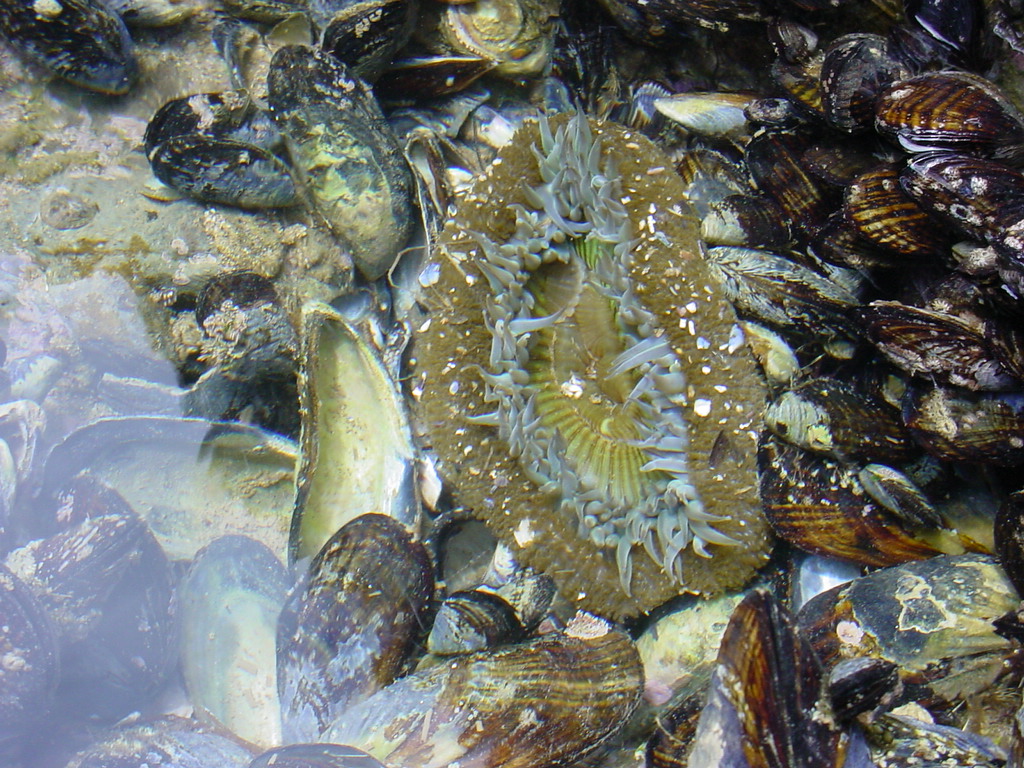 |
| Phylum Cnidaria
Class Anthozoa Subclass Zoantharia Order Actniniaria Family Actiniidae |
|
| Acanthopleura sola at Little Corona del Mar, CA. About 12 cm diameter | |
| Photo by: Dave Cowles, 3-2005 | |
How to Distinguish from Similar Species: : It is similar to Anthopleura xanthogrammica, which is all green. Anthopleura artemisia has verrucae on only the top 2/3 of its column and usually lives mostly buried in sand. Anthopleura elegantissima is usually smaller and usually is found in clonal groups rather than solitary.
Geographical Range: From Central California to Baja California
Depth Range: Live in the lower intertidal zone.
Habitat: Rocky intertidal areas on the outer coast.
Biology/Natural History: Background color is due in part to zooxanthellae living symbiotically in the gastrodermal layer. This species is found in similar situations as is Anthopleura xanthogrammica farther north on the Pacific coast.
| Return to: | |||
| Main Page | Alphabetic Index | Systematic Index | Glossary |
References:
Dichotomous Keys: (In all these keys this species keys as A. elegantissima)Allen, 1976
Kozloff 1987, 1996
Smith and Carlton, 1975
General References:
Scientific Articles:
Francis, Lisbeth, 1979. Contrast between solitary and clonal lifestyles in the sea anemone Anthopleura elegantissima. American Zoologist 19: 669-681
McFadden, C.S., R.K. Grosberg, B. B. Cameron, D. P. Karlton, and D. Secord, 1997. Genetic relationships within and between clonal and solitary forms of the sea anemone Anthopleura elegantissima revisited: evidence for the existence of two species. Marine Biology 128: 127-139
Pearse, V. and L. Francis (2000) Anthopleura sola, a new species, solitary sibling species to the aggregating sea anemone, A. elegantissima (Cnidaria: Anthozoa: Actiniaria: Actiniidae). Proc Biol Soc Washington 113: 596-608
Smith, B.L. and D.C. Potts, 1987. Clonal and solitary anemones (Anthopleura) of western North America: population genetics and systematics. Marine Biology 94: 537-546
General Notes and Observations: Locations, abundances, unusual behaviors, etc.:
This species has wide
variety of color variations on
the oral disk. Here are two:
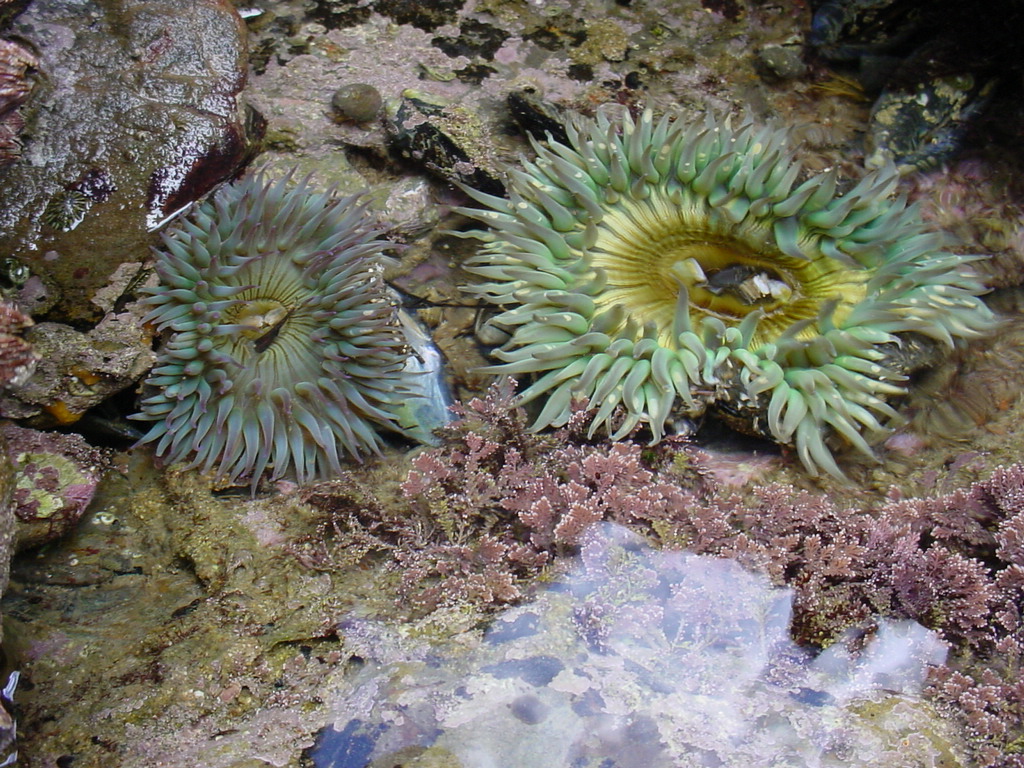
Photographed at Moss Street Beach, Laguna, CA by Dave Cowles, March
2005. Diameter of the large anemone is about 15 cm.
Note the
white spots that are frequently found on the tentacles of this species.
This individual has its mouth open, and the filmy "lips" can
be seen.
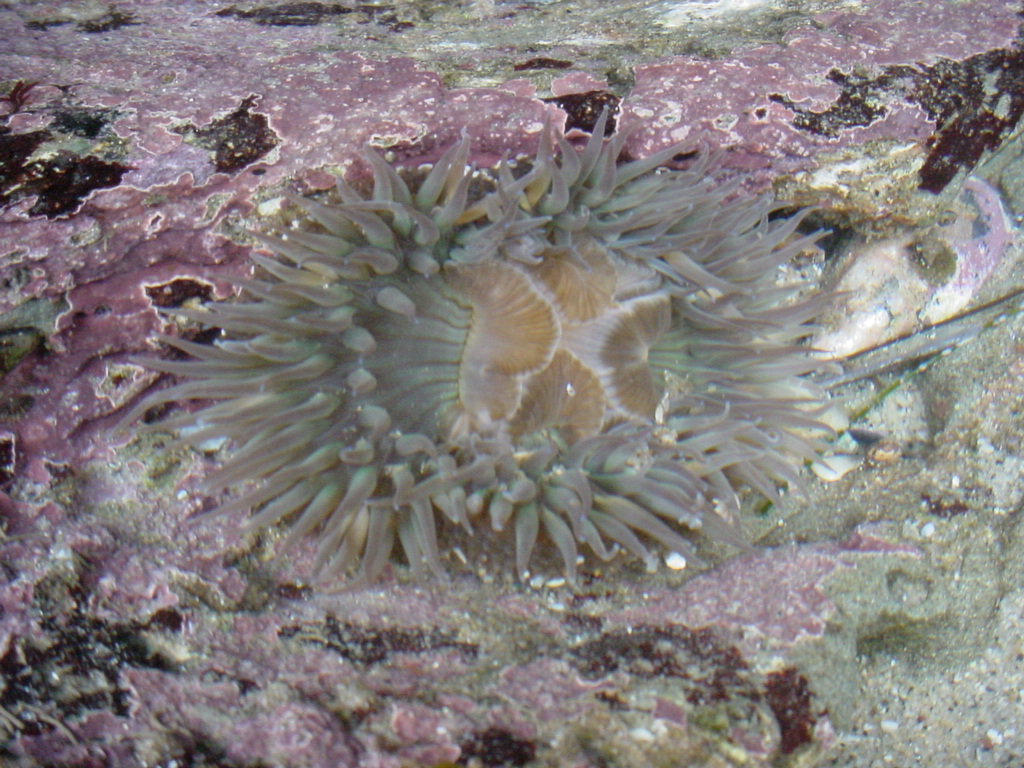
Photo by Dave Cowles, Little Corona del Mar, CA, March 2005
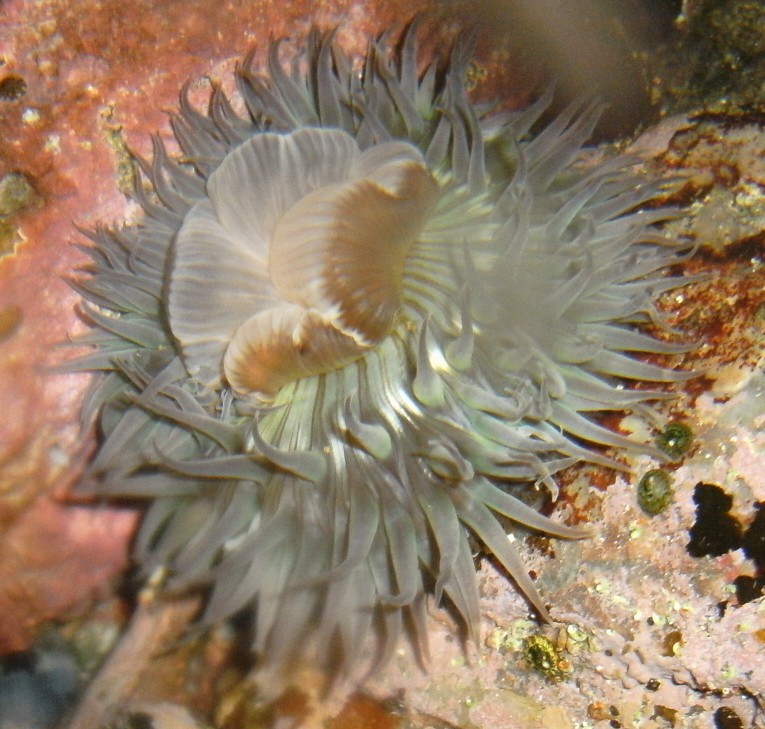
Holding the frilly lips loosely is common with A. sola, as seen also in this individual at Laguna Beach, CA. A. xanthogrammica is a similar sized anemone but seldom holds its lips like this. Photo by Dave Cowles, August 2010
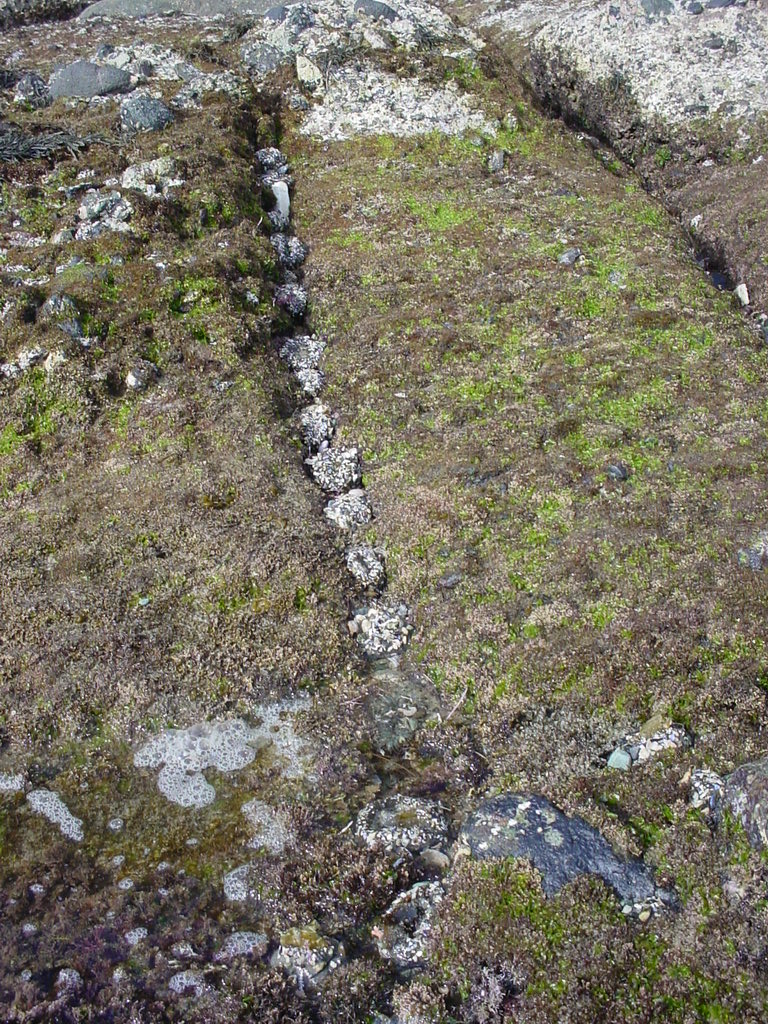
This species favors sheltered microhabitats. On rocks with
cracks,
such as this one at Dana Point, CA, the anemones can be found in lines
along the crack.
Photo by Dave Cowles, March 2005

The crack need not even be very large. Note the row of A.
sola on this rock at Little Corona del Mar, CA.
Photo by Dave
Cowles, March 2005 Note also that the anemones
have covered themselves with bits of shell.
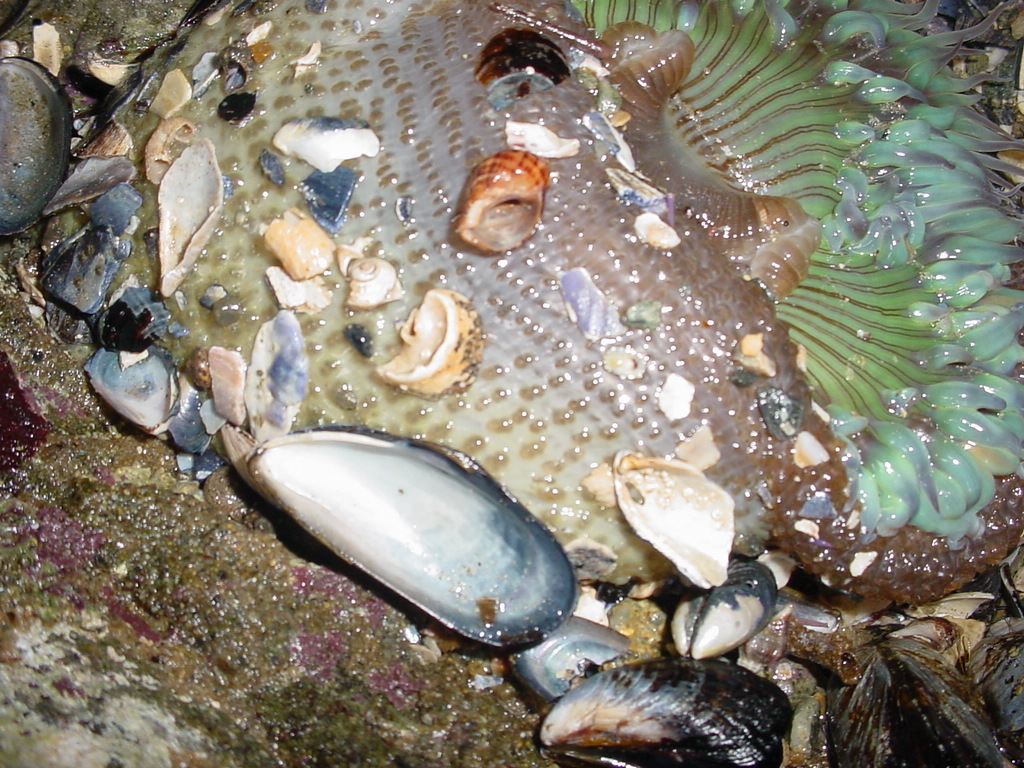
The column of Anthopleura sola is covered
with rows of
tubercles (verrucae), many of which attach to bits of rock or shell.
Photo by Dave Cowles at Little Corona del Mar, CA, March 2005
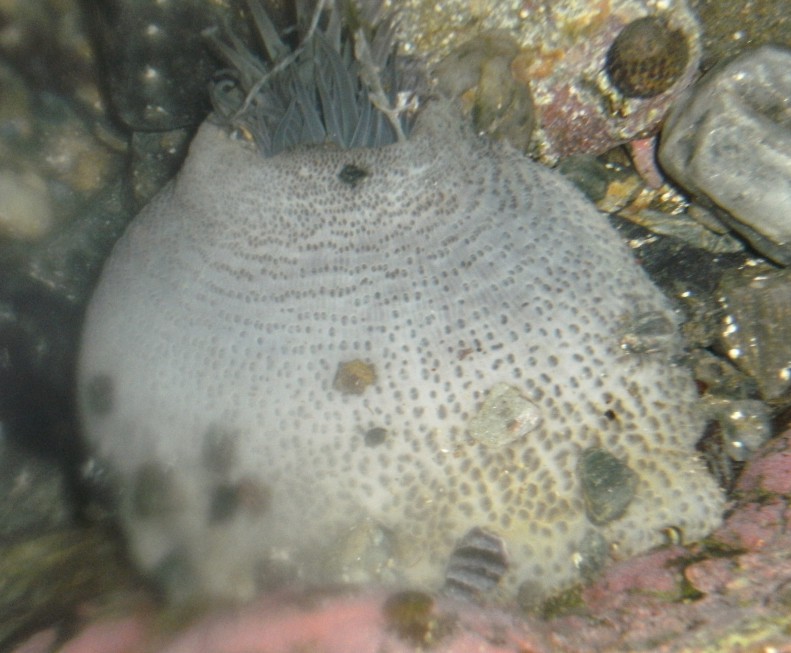
This photo of a closed individual at Laguna Beach, CA also shows the verrucae pattern. Photo by Dave Cowles, 2010

This is a picture of two A elegantissima or A.
sola fighting,
using their specialized white tentacles called acrorhagia.
Normally the acrorhagia are small and hardly visible near the base
of the normal, green tentacles.
Taken at San Simeon, CA by Dave Cowles in a tidepool.
This A. sola (about 13 cm diamter) is attacking an Aplysia
sea hare in a Dana Point, Ca tide pool. Note the ink released
from
the sea hare.
This is the only time I have seen this anemone species attacking a
sea hare. It appears the sea hare wandered onto the
anemone.
The sea hare later died, but I did not see whether the anemone
swallowed
it.
Photo by Dave Cowles 5-99
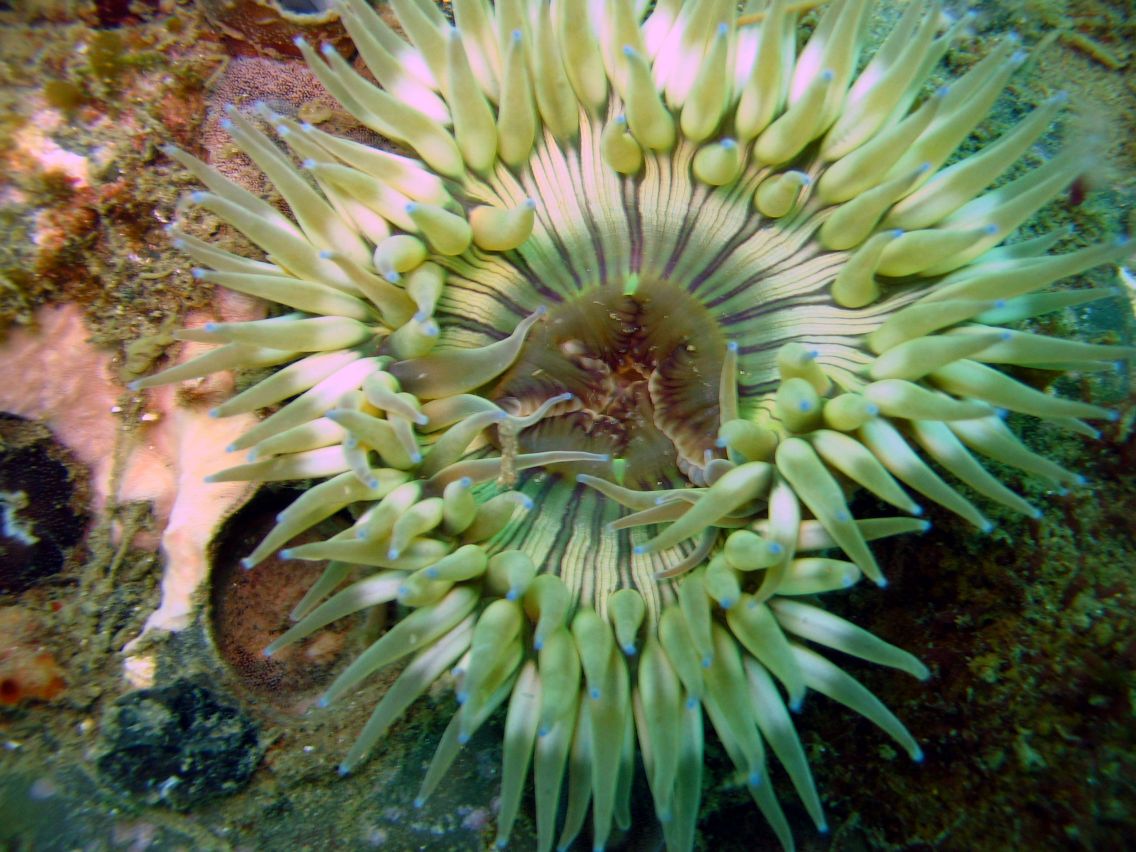
This individual was photographed by Charles
Hollahan of Santa
Barbara Marine Biologicals
at about 3m depth off Coal Oil Point, Santa Barbara, CA in
2005.
Note the unusual blue tentacle tips.
Authors and Editors of Page:
Dave Cowles, 2005